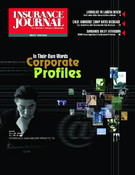Five Practical Coverage-Related Suggestions to Mitigate E&O Claims
There is an abundance of material offering insurance agents advice designed to minimize or prevent errors and omissions claims. Most of these materials are generalized, focusing on proper file documentation and stressing frequent communication with customers and prospects. Most of these admonitions are accurate and helpful. Individual agencies also sometimes arrange for elaborate auditing and risk control procedures, all designed to mitigate the undesirable effects of agency E&O claims. Agents can modify their procedures and place additional importance on documentation, both quality and quantity. But how can agents work to minimize the E&O exposure in areas relating to insurance coverage?
Here are some suggestions and descriptions of specific coverage areas where agents need to be alert for possible E&O allegations.
1. Not taking the time to explain the coverage nuances associated with sensitive, catastrophic claims exposure areas.
Directors and officers liability insurance is a good coverage to use to illustrate. D&O has seen much more attention in the wake of the corporate governance scandals since 2001. Currently, the market for most types of this coverage is soft, with no firming in sight. The reduced cost and increased competition also generates a more liberal approach by underwriters to coverage issues. Specific statutes in almost every jurisdiction hold that the new business application for D&O insurance is considered a “warranty” as to the accuracy of the responses to questions that might be considered by many as “ambiguous.” To provide a finite answer (such as “no”) to an ambiguously worded question is only asking for trouble if a claim should later arise. At that point, the initial underwriter is no longer a part of the insurance settlement equation, and the claims person (or claims attorney) will be focusing on the coverage, with the application (which was considered a “warranty”) being overlaid with the coverage. This can lead to a variety of issues, almost none of which is desirable to the buyer.
The seller of the product must understand some of the basic nuances of the coverage (with D&O, there are many) in order to be able to properly explain them to the customer, and therein lays the rub for many smaller insurance agents. Understanding is the key to appropriate advice and counsel for buyers.
2. The importance of providing some parameters on limits and per claim deductible amounts for catastrophic coverages.
The concept of “benchmarking” has gained increased visibility in the past few years. Essentially, several available sources of information on limits and deductibles are consulted in an effort to give information being considered by the buyer some credibility (mainly limits, but secondarily, per claim deductible amounts and perhaps even premium amounts). Several good sources of benchmarking information include the online data base at Advisen (www.advisen.com); the Tillinghast Towers-Perrin surveys on D&O and fiduciary liability (www.towersperrin.com); and the American Bankers Association Survey of Bank Insurance (www.aba.com). For publicly-traded organizations, Stanford University’s Web site (www.securities.stanford.edu) provides excellent information on settlements and status of shareholder class action suits against directors and officers. For clients who allege that the limits sold to them were not enough, the use of benchmarking in proposals can protect agents. A written notation that increased limits are available is also recommended.
3. Researching available coverage extension and policy exclusion language modification to achieve the broadest possible insurance policy language.
Especially in “soft market” cycles, underwriters are more flexible with policy language modification than in hard (or transitional “firming”) market cycles. One of the early lessons in the property/liability insurance business is that almost everything is “negotiable” and most commercial insurance buyers expect the broadest policy language available in the market. Several organizations provide coverage checklists (International Risk Management Institute is a good example: www.irmi.com). Keeping up with the evolution of coverage language is critically important to attracting and retaining clients.
4. Properly relating new exposures to both traditional as well as emerging insurance products.
The insurance industry is one of change and cycles and this is against the backdrop of more rapid changes in technology and business practices. Twenty years ago, many insurance agents didn’t have fax machines; now, computer technology is forcing even smaller agents to use mobile computers and wireless technology. This brings into focus the importance of understanding emerging technologies as they relate to “traditional” insurance products, as well as emerging “cyber” insurance products. Traditional insurance products are simply not designed to properly address emerging technology exposures. To handle the exposures of “cyber” situations, agents must understand how the variety of new insurance products addresses (and do not address) these exposures. If an agent finds himself in a situation where a “traditional” insurance product is in place and the loss that occurs involves “intangible property” (and nothing about the Internet is tangible), or there are liability allegations of “security failure” or “unauthorized access” (to name a few emerging exposures), the agent can expect E&O problems, not to mention loss of business. Keeping current with emerging insurance products is critical.
5. Appropriately analyzing laws and regulations affecting exposures, and subsequently securing proper insurance coverage.
Although no reasonable person expects an insurance agent to have the legal training of a practitioner of the law, a basic knowledge of major legal issues affecting property/liability insurance can make a significant competitive difference. For example, punitive damage awards (meant to punish wrongdoers beyond compensatory damages) are a matter of statutory law. Each state determines whether insurance proceeds may be used to pay punitive damages. So, knowing the positions of the states of domicile of clients with liability exposures is almost mandatory. But since geographical boundaries are rapidly disappearing, agents need to also know the positions of other states. Good sources of this information include American Reinsurance (www.amre.com) and the law firm of Wilson, Elser (www.wemed.com). Using the individual state information, it is possible to construct a map of the U.S., indicating the position of each state with regard to the insurability of punitive damages. This information can prove invaluable in advising clients on the important aspect of the insurability of punitive damages.
Everyone learns from mistakes, however; it would be less costly for many insurance agents if they took the preventative approach.
Clarke is senior vice president with J. Smith Lanier & Company, an Atlanta-based regional retail insurance brokerage. He focuses on executive
liability, E&O and “cyber” situations. J. Smith Lanier is a RiskProNet member. He can be reached at dclarke@jsmithlanier.com, or (770) 476-1770.
Was this article valuable?
Here are more articles you may enjoy.


 Owner of Historic Minnesota Resort Charged With Arson, Insurance Fraud
Owner of Historic Minnesota Resort Charged With Arson, Insurance Fraud  WTW to Acquire Newfront in Deal Worth Up to $1.3B
WTW to Acquire Newfront in Deal Worth Up to $1.3B  Florida Jury Returns $779M Verdict for Family of Security Guard Killed at Gambling Cafe
Florida Jury Returns $779M Verdict for Family of Security Guard Killed at Gambling Cafe  Abbott Presses Congress for Legal Shield Over Preemie Baby Formula Lawsuits
Abbott Presses Congress for Legal Shield Over Preemie Baby Formula Lawsuits 


